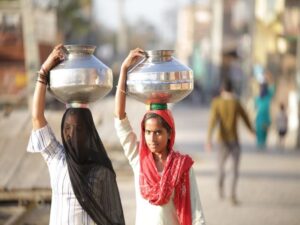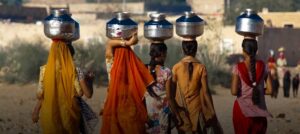Once upon a time in 1995, drinking water was taken from the well, but the canal water was drinkable. Irrigation was done with canal water, some landlords had installed tube wells. Then there was water at a maximum of 20 feet. But after this the need for water increased and the wells dried up. Farmers started installing tubewells, but even then water was available at 60 to 75 feet.
But in 2007 there was such a drought that almost all the tubewells dried up. It had not rained for three years. When people started installing tubewells in the fields at other places, the water reached 200 to 250 feet. Water was found at this depth but this water was salty. The effect of this was that the crops started getting spoiled. Sprung especially in summer means it started ripening quickly.
This is the story of Ardana village, about 140 km from the country’s capital Delhi. Ardana is a Village in Assandh Block in Karnal District of Haryana. The population of the village is about 12 thousand. Here three tubewells have been installed by the State Public Health Department for drinking water. Since the water above is brackish, boring was done up to 1,000 feet (about 304 m) below for fresh water.

Photo courtesy: Midun Vijayan (downtoearth.org)
The situation has become such that some big farmers have installed submersible pumps by boring up to 1,000 feet below to irrigate the crops. One such pump costs 15 to 16 lakh rupees. On the other hand, the farmers who install 200-250 feet deep tubewells, their expenditure comes to 4 to 5 lakh rupees. When the need for water increases in summer, the farmers take water from the canal passing outside the village. For this, the Irrigation Department has to pay Rs 6,000 for a season.
Ardana is one of the villages in Haryana which fall in the red category in terms of groundwater level. In fact, the Haryana Water Resources (Conservation, Regulation and Management) Authority issued a public notice on January 7, 2022, stating that 1780 villages in the state are in the red category. Red category means where there is severe groundwater crisis. The groundwater level in these villages is below 30 metres.
This authority was constituted in 2020 under the Haryana Resources (Conservation, Regulation and Management) Authority Act 2020. The authority has divided the state’s 6,885 villages into different categories. In this, the number of villages with groundwater level of 20 to 30 meters is 1041, while the number of villages with groundwater level of 10 to 20 meters is 1807, the number of villages with 5 to 10 meters is 1261, the number of villages with three to five meters is 592, The number of villages with 1.5 to 3 meters water table is 319 and the number of villages with less than 1.5 meters water table is 85. The villages in the lower three categories have been kept in the category of water logging.
In this report of the authority, the groundwater level of Adrana has been stated as 40 meters (131.24 feet) in June 2020. Which was 8.04 meters in June 2010. According to this report, the groundwater level in this village declined by 31.96 meters during a decade. That is, on an average 3.19 meters of water has gone down every year. Although the villagers say that at this time the groundwater level has reached 200 to 250 square feet (more than 60 meters).
If we talk about the whole of Karnal, then 402 villages of Karnal have been included in the authority’s list, out of which 46 villages are in the red category, but Ardana is at the top of this list. The groundwater level here has reached up to 40 metres, while the groundwater level in the rest of the villages is between 30 and 40 metres.
The main crops of the village are paddy and wheat. Experts consider paddy and wheat crops to be the reason for the continuous lowering of the groundwater level in Haryana. Especially a lot of water is used in paddy. It is noteworthy that 2,500 to 5,000 liters of water is used to grow one liter of rice.

Photo courtesy: crsbox.org
Although the Haryana government had started a scheme three years ago in view of the huge decline in the groundwater level in the state, in which farmers were told that they would be given a bonus if they grow other crops instead of paddy. Last year, the Haryana government had promised Rs 7,000 per acre.
But the farmers of Ardana village are not very enthusiastic about this scheme. Ram Diya Sharma, a farmer who cultivates seven acres of the village, says that there is only paddy and wheat, which makes little profit. Whenever you plant another crop, you have to bear the loss.
He says that about 50 thousand rupees of paddy is produced in one acre, while the expenditure is 20 to 25 thousand rupees. Similarly, 25 to 30 thousand rupees of wheat is produced in one acre. Since the government buys only wheat and paddy at the minimum support price, it saves. Nothing survives on the rest of the crops.
Neerain is proud to republish this article for spreading awareness about the situation of water, for our stakeholders. Credit whatsoever goes to the Author.
This article is published by: –
We would like to spread this for the benefit of fellow Indians.
Author: Raju Sajwan
Publish On: March 22, 2022.
